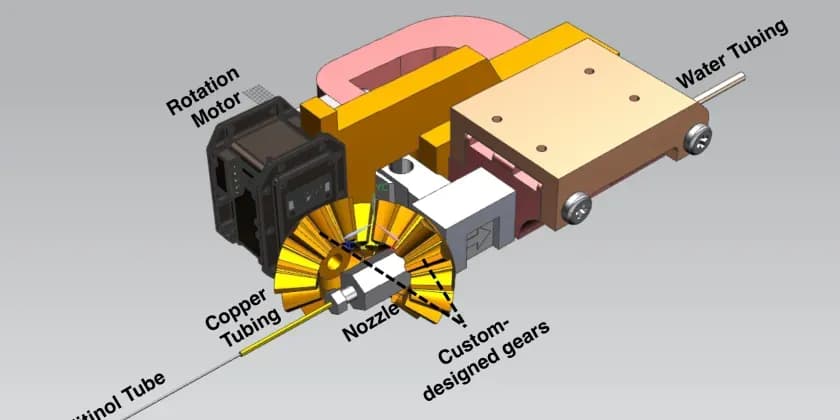Duty Cycling of Waterjet Can Improve Steerability and Radius-of-Curvature (ROC) for Waterjet Steerable Needles

Our paper on curvature control of waterjet steerable needles is accepted to be presented at ISMR 2020 and also to be published in IEEE.
The contributors of this paper are Mahdieh Babaiasl, and Fan Yang under the supervision of Dr. John Swensen.
The abstract of this paper is:
Steerable needles are a type of medical devices that can steer around obstacles to reach a target location and thus can improve the accuracy of medical procedures.
Radius-of-Curvature (ROC) is of paramount importance while designing steerable needles and achieving smaller radius and being able to control it is very important in evaluating the efficacy of the steerable needles.
In this paper, the idea of a new class of steerable needle technology namely fracture-directed waterjet steerable needles is presented in which the direction of the tissue fracture is controlled by waterjet and then Nitinol tube follows.
Needle steering tests are performed on two different stiffnesses of SEBS soft tissue simulants, as well as 10% by weight Knox Gelatin (Kraft Foods Global Inc., IL) as substitutes to real biological tissues.
The curvature of the needle is controlled by waterjet duty cycling and it is shown that it can be controlled from about 0 (when waterjet is OFF at all steps) to maximum curvature (when waterjet is ON for all steps).
It is concluded that the curvature is a linear function of the duty cycling and that the smallest ROC of the waterjet steerable needle (when waterjet is ON at all steps) is improved in comparison to the smallest ROC of traditional steerable needles in the same tissue phantom.

You can see the full article on waterjet steerable needle curvature control HERE!
The Software related to the needle insertion controller implemented in C and Python can be downloaded below:
Video below shows the difference between Waterjet Needle and Traditional Needle:
Video below shows the concept of waterjet needle steering:
